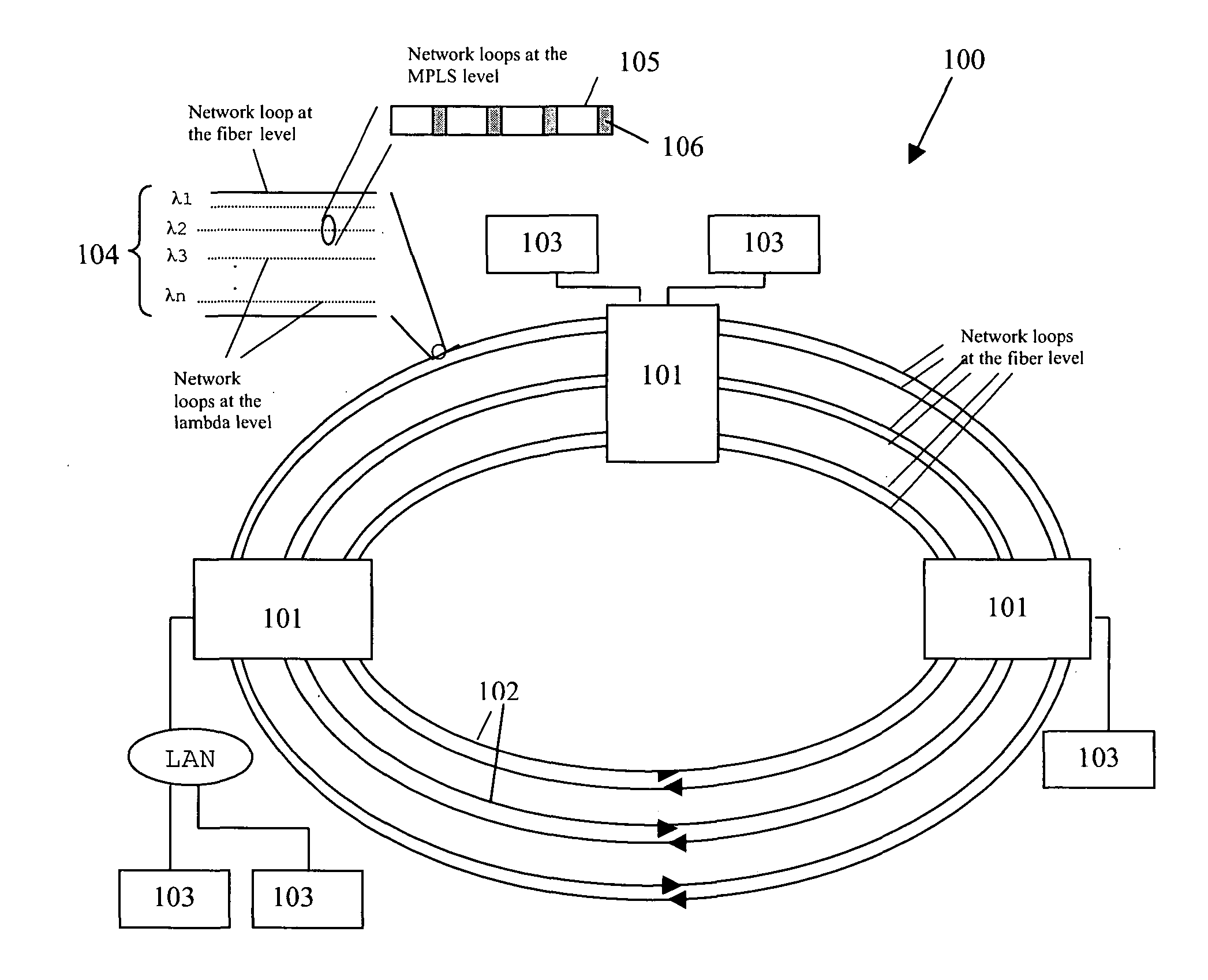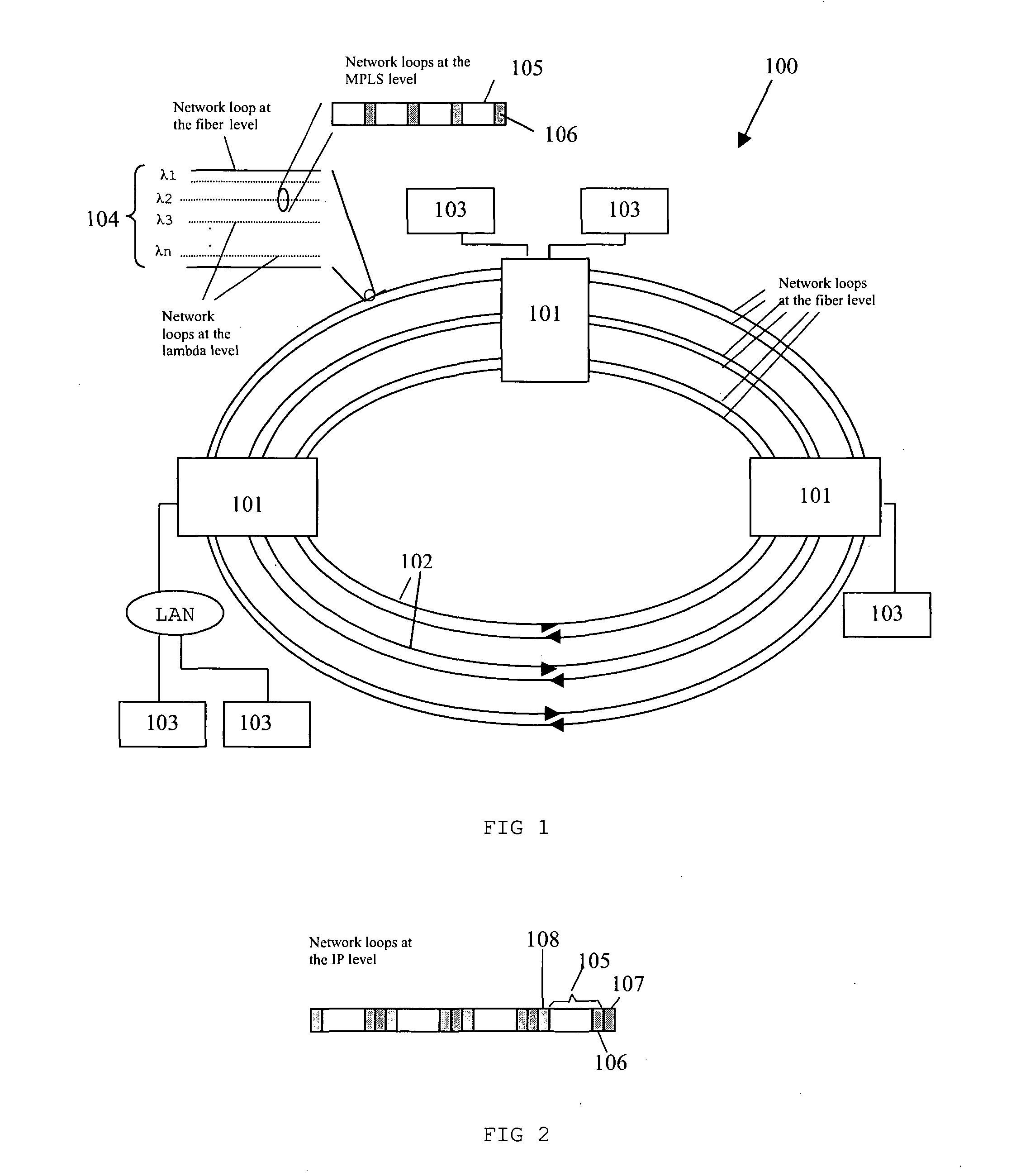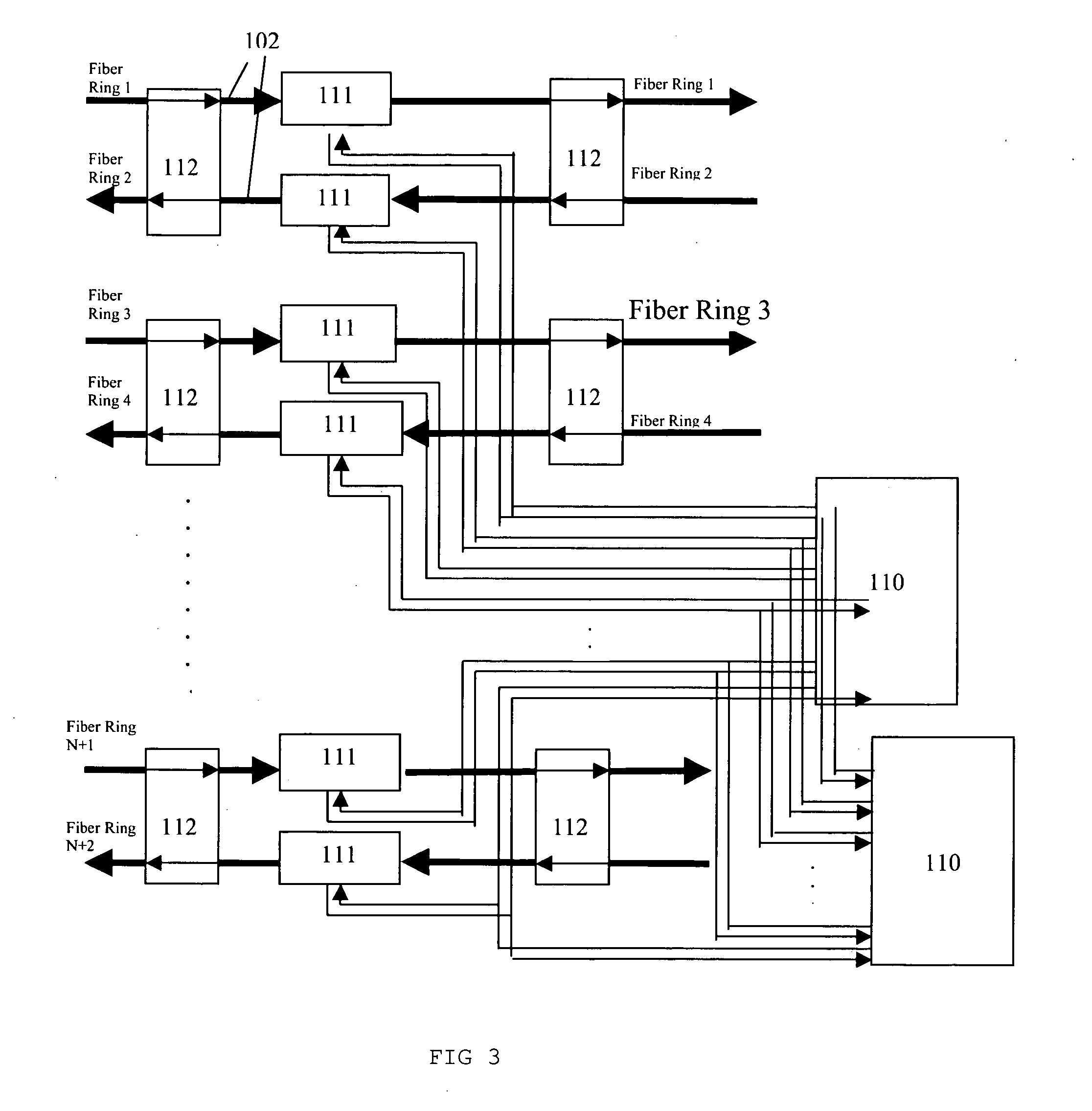Method and system for enabling recovery of data stored in a computer network; a method and a system for recovering data stored in a computer network
- Summary
- Abstract
- Description
- Claims
- Application Information
AI Technical Summary
Benefits of technology
Problems solved by technology
Method used
Image
Examples
Embodiment Construction
[0077]FIG. 1 shows a computer network 100 comprising a plurality of computer nodes 101 connected in a ring topology. The computer nodes 101 are connected to one another using optical fibers 102 in a form of a ring, and distributed processors 103 are connected to the computer nodes 101.
[0078] The Multiprotocol Label Switching (MPLS) is preferably used for controlling the forwarding of data packets in the computer network 100. This is because MPLS not only supports data packet switching at the computer nodes 101, but also supports lambda switching and fiber switching at the computer nodes 101, in the optical fiber network 100.
[0079] There are three levels of network loops in the optical fiber network 100: fiber level, lambda level and packet level. Network loop at fiber level refers to the optical fibers 102 which are used to connect each computer nodes 101. Network loop at lambda level refers to separate wavelengths, called lambdas 104, which are used as tracks in each optical fibe...
PUM
 Login to View More
Login to View More Abstract
Description
Claims
Application Information
 Login to View More
Login to View More - R&D
- Intellectual Property
- Life Sciences
- Materials
- Tech Scout
- Unparalleled Data Quality
- Higher Quality Content
- 60% Fewer Hallucinations
Browse by: Latest US Patents, China's latest patents, Technical Efficacy Thesaurus, Application Domain, Technology Topic, Popular Technical Reports.
© 2025 PatSnap. All rights reserved.Legal|Privacy policy|Modern Slavery Act Transparency Statement|Sitemap|About US| Contact US: help@patsnap.com



